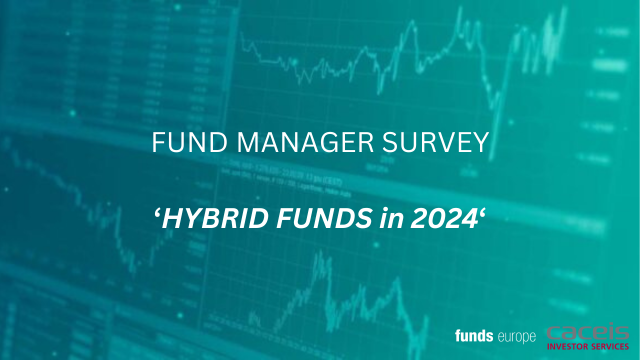All asset servicers are looking to create offerings that cover front, middle and back-office operations. But as Nicholas Pratt discovers, they are going about it in different ways.
In February, Northern Trust signed a file exchange agreement with SimCorp to automate the transfer of data between its global custody service and any of Northern Trust’s custody clients using the SimCorp platform.
According to Jaki Walsh, SimCorp’s vice-president of operations and accounting, the digitisation of asset servicing-related products and services is driving a trend towards data interoperability between companies that operate in the same ecosystem.
Northern Trust, therefore, is not the only custodian to have entered into such an arrangement. Eighteen months earlier, in November 2021, Citi struck a “strategic alliance” with SimCorp to integrate post-trade custody data and provide a “seamless front-to-back user experience” for its mutual fund clients.
In truth, data interoperability has been a key driver of technology trends for many years now, arguably driven by rising regulatory requirements as much as by digital apps. Compliance demands have required firms to produce and report data covering the entirety of a firm’s enterprise, and that means knowing where data can be found and how it can be extracted.
At the same time, asset managers have expanded into new geographies and asset classes, not least in alternative and private markets. And they have also looked to add more digital capability on the front end.
Get a grip on data
Asset managers have become increasingly reliant on third-party data providers for their custody, fund administration and portfolio/order management as they slim down their operating models. Consequently, getting any kind of grip on data requires cooperation and interoperability between the various providers as asset managers might employ in the front, middle and back office.
The issue for asset managers is deciding which is the best way to achieve this interoperability, given there are various options in the market. For example, while the likes of Citi and Northern Trust have formed alliances with SimCorp to benefit their asset manager clients, there are other custodian and fund administrators that have gone down a different path based on making large acquisitions to build a single, front-to-back platform and advocating for a default, standardised operating model.
“The likes of Thinkfolio, SimCorp, Aladdin and Bloomberg are very well-used platforms that have penetrated the market. Our clients use them and are reliant on that data. We want to make it as easy as possible to integrate and extract that data.”
Other asset servicers have looked to build an online marketplace or ecosystem where there is a central platform that links to a range of microservices through APIs or similar technology. The idea is that the asset servicer acts as a curator of third-party partners as much as a platform.
And then there are the asset managers Amundi and BlackRock that built their own tech platforms and can offer them to other asset managers, enabling another way for firms to forge links to the systems of asset servicers.
Ideal operating models
According to Northern Trust’s global head of platform strategy, Marc Mallett, the collaboration with third-party providers like SimCorp is intended to help clients design their ideal target operating model. “If you look at how we’ve evolved over the last few years, we have been building capability which will ultimately help asset managers,” says Mallett.
Northern Trust acquired Omnium, the hedge fund administration business of Citadel, in 2011 and brought a portion of Citadel’s technology team in-house in 2018 to develop its platform for derivatives and alternatives. In the same year, Northern Trust also acquired Parilux to act as a platform for asset owners operating in private markets. “We saw the hedge fund business grow, so it made sense to acquire the tech,” says Mallett. “The Parilux acquisition was to help the launch of our front-office solutions business. We now have the chance to bring together private and public assets on a single platform.”
In reference to the SimCorp deal, Mallett recognises the importance of forging links to popular platforms that are used by asset managers as their investment ‘engines’. “The likes of Thinkfolio, SimCorp, Aladdin and Bloomberg are very well-used platforms that have penetrated the market. Our clients use them and are reliant on that data. We want to make it as easy as possible to integrate and extract that data. It is part of our ‘Whole Office’ concept. We look at their entire business.”
Mallett says that while asset servicers want to provide as much of the tech as possible, some asset managers will still want to maintain multiple vendor relationships. “We recognise that we will not be the only port of call for clients.”
“Most of the competition has similar aspirations – solving the existential problems facing asset managers. But there are different ways of building a mousetrap and we believe our mousetrap is the best.”
Consequently, asset servicers will have to be open and agile in their operating infrastructure and more accessible when it comes to working with others.
“There is no single platform that clients would use for everything, so we want to make it as easy as possible when using multiple systems,” says Mallett. He uses the example of the e-commerce platform Shopify as an analogy for Northern Trust’s strategy. “We want our platform to serve as a marketplace that can bring all of these capabilities together and find partners where we don’t have that capability.
“We view ourselves as playing that central role,” says Mallett. “We have a proprietary capability, but we are happy for our clients to use other providers and that we will work with. We will continue to expand our capability, which I think is a little bit different to others. Yes, we want to get a share of the client’s wallet and to ensure an ROI in terms of technology spending. But we recognise there’s more than one solution.”
Mallett says alliances with software firms and investment platforms are not new developments. “We’ve been engaging with software firms for some time, so I don’t think our behaviour has changed. We have always looked to find ways to integrate with other players in the investment process. The platforms have done a great job up to now and we will continue to work with them.”
Northern Trust will also continue to work with technology like Snowflake, whereby Northern Trust has developed a data-as-a-service product – Data Warehouse Solutions – utilising the Snowflake technology.
“Snowflake has also had a big impact – despite not being a financial services-specific provider – in terms of helping to bring disparate data sets together. Investment management firms are using the platform extensively,” says Mallett.
Single, integrated front-to-back platform
State Street, like other asset servicers and global custodians, has traditionally been seen as a back-office player and, over the past two decades, has been expanding into the middle and front office. The 2018 acquisition of Charles River, a provider of an order management system, was a “logical consequence” of this development, says Cuan Coulter, global head of asset manager segment and UK country head of State Street.
“We think asset managers serve their clients best by focusing on two things – their investment strategy and their distribution efforts. Everything else is ancillary.”
The best way to achieve that, says Coulter, is to build a single, integrated front-to-back platform. “In many ways, it is a massive data management exercise to give asset managers a much more facile view of their data and the ability to use that data to make decisions,” he says. “Most of the competition has similar aspirations – solving the existential problems facing asset managers. But there are different ways of building a mousetrap, and we believe our mousetrap is the best.”
It should also be remembered that asset managers’ current needs might not be the same as their future needs, says Coulter. Therefore any service providers need to be scalable – something that asset managers will struggle with if they are using their own in-house systems. “We are able to scale with them, whether that is up or down. But if you’re building your own infrastructure, it will be a costly distraction,” says Coulter.
“Ultimately, it is good for asset managers to be nimble, and if you are heavily reliant on your bespoke in-house systems, it will be hard to achieve that. That said, while we have a view as to what the best operating model is, we recognise the need for an open architecture that caters for clients’ various strategies while also advocating for the value of standardisation.”
Where State Street opted for an acquisition and to integrate Charles River into its Alpha platform, other asset servicers have pursued alliances. “We felt it was important to do what we said on the tin. If you are going to offer a full-service, front-to-back, enterprise outsourcing offering, then you need to fully integrate those acquisitions. Alternatively, if you are entering into a number of alliances, I would question if you are really simplifying your operating model,” says Coulter.
The microservices approach, where APIs are used to link to various fintechs and apps on the front end, has a value in certain but not all parts of the supply chain, says Coulter. In contrast, he thinks the front-to-back offering can cater for both large and small businesses and will hold true in a perpetual timeframe.
“I suspect that what will happen in the future is there will be a handful of large-scale players plus a long, long tail of other providers offering various permutations. Despite the existential challenges facing asset managers, many of them still have extensive in-house infrastructure and place a philosophical value on that,” says Coulter.
© 2023 funds europe





